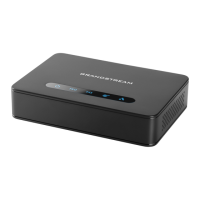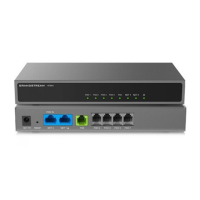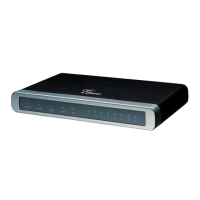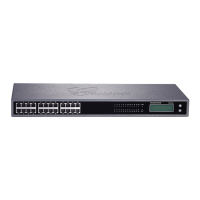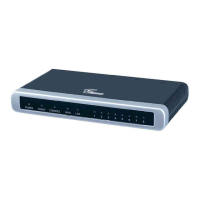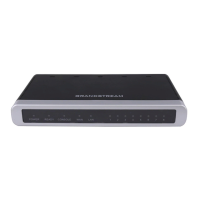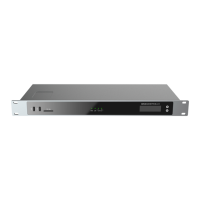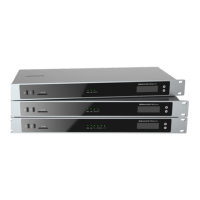http://tftpd32.jounin.net/.
Instructions for local firmware upgrade via TFTP:
1. Unzip the firmware files and put all of them in the root directory of the TFTP server.
2. Connect the PC running the TFTP server and the phone to the same LAN segment.
3. Launch the TFTP server and go to the File menu->Configure->Security to change the TFTP server’s default setting from “Receive Only” to
“Transmit Only” for the firmware upgrade.
4. Start the TFTP server and configure the TFTP server in the phone’s web configuration interface.
5. Configure the Firmware Server Path to the IP address of the PC.
6. Save and Apply the changes and reboot the HT841/HT881.
End users can also choose to download a free HTTP server from http://httpd.apache.org/ or use Microsoft IIS web server.
Firmware and Configuration File Prefix and Postfix
Firmware Prefix and Postfix allows device to download the firmware name with the matching Prefix and Postfix. This makes it the possible to store all
of firmware with different version in one single directory. Similarly, Config File Prefix and Postfix allows device to download the configuration file
with the matching Prefix and Postfix. Thus, multiple configuration files for the same device can be stored in one directory.
In addition, when the field “Check New Firmware only when F/W pre/suffix changes” is set to “Yes”, the device will only issue firmware upgrade
request if there are changes in the firmware Prefix or Postfix.
Managing Firmware and Configuration File Download
When “Automatic Upgrade” is set “Yes, every” the auto check will be done in the minute specified in this field. If set to “daily at hour (0-23)”,
Service Provider can use P193 (Auto Check Interval) to have the devices do a daily check at the hour set in this field with either Firmware Server or
Config Server. If set to “weekly on day (0-6)” the auto check will be done on the day specified in this field. This allows the device periodically check
if there are any new changes need to be taken on a scheduled time. By defining different intervals in P193 for different devices, Server Provider can
spread the Firmware or Configuration File download in minutes to reduce the Firmware or Provisioning Server load at any given time
Configuration File Download
Grandstream SIP Devices can be configured via the Web Interface as well as via a Configuration File (binary or XML) through TFTP or FTP/FTPS or
HTTP/HTTPS. The Config Server Path is the TFTP or FTP/FTPS or HTTP/HTTPS server path for the configuration file. It needs to be set to a valid URL,
either in FQDN or IP address format. The Config Server Path can be the same or different from the Firmware Server Path.
A configuration parameter is associated with each particular field in the web configuration page. A parameter consists of a Capital letter P and 2 to 3
(Could be extended to 4 in the future) digit numeric numbers. i.e., P2 is associated with the “New Password” in the Web GUI->Maintenance-
>Web/SSH Access page->Admin Password. For a detailed parameter list, please refer to the corresponding firmware release configuration template.
When the HT841/HT881 boots up or reboots, it will send a request to download the xml file named “cfgxxxxxxxxxxxx.xml” followed by the binary file
named “cfgxxxxxxxxxxxx”, where “xxxxxxxxxxxx” is the MAC address of the phone, i.e., “cfg000b820102ab” and “cfg000b820102ab.xml”. If the
download of “cfgxxxxxxxxxxxx.xml” file is not successful, the provision program will download a generic cfg.xml file. The configuration file name
should be in lower case letters.
For more details on XML provisioning, please refer to: https://documentation.grandstream.com/knowledge-base/sip-device-provisioning-guide/
RESTORE FACTORY DEFAULT SETTINGS
There are three (3) methods for resetting your unit:
Restoring the Factory Default Settings will delete all configuration information on the phone. Please backup or print all the settings before you restore to
the factory default settings. Grandstream is not responsible for restoring lost parameters and cannot connect your device to your VoIP service provider.

